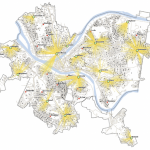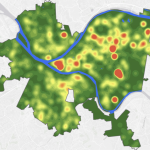GIS Tutorial for ArcGIS Pro
Chapter 9: Spatial Analysis
This chapter introduces spatial analysis techniques used to examine geographic patterns and relationships. It covers essential tools like buffering, which creates zones around features, and overlay analysis, which helps combine multiple datasets to determine intersections. The tutorials walk through various spatial analysis applications, such as proximity analysis for service areas and clustering to identify data patterns. A major takeaway is that spatial analysis provides insights by identifying relationships between spatial elements. These techniques are useful in decision-making for urban planning, environmental assessments, and resource management. One challenge encountered was configuring buffer distances correctly to ensure accurate analysis.

Chapter 10: Raster GIS
This chapter explores working with raster data, which is crucial for environmental and topographic analysis. The tutorials focus on processing raster datasets, performing raster calculations, and creating heat maps using kernel density analysis. Additionally, it introduces the concept of suitability modeling by combining multiple raster layers. Understanding how raster data represents continuous surfaces like elevation and temperature is essential for GIS applications. Challenges included managing large raster files and selecting appropriate classification methods for visualization.

Chapter 11: 3D GIS
This chapter focuses on working with three-dimensional data to enhance spatial visualization. It covers tools for creating and manipulating 3D scenes, converting 2D features into 3D representations, and performing line-of-sight analysis. Tutorials include building elevation models and integrating LiDAR data for realistic 3D mapping. Unfortunately, the 3D feature is still not working on my side, which limited my ability to complete most of the exercises in this chapter. Since I couldn’t properly load or visualize the 3D elements, I continued reading through the material to understand the concepts.